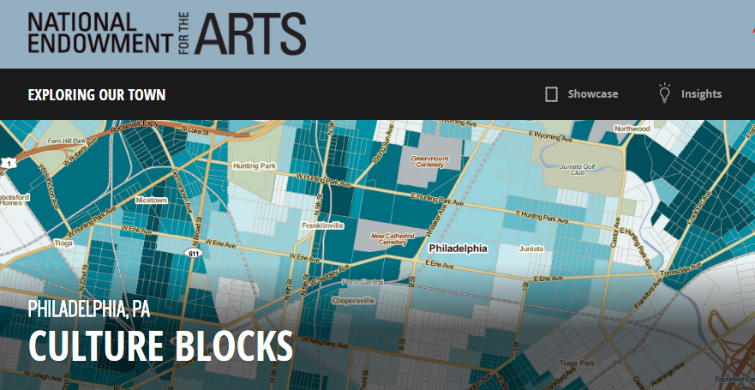Developing an Arts and Culture Hub, with Data


The Philadelphia Inquirer recently showcased a study by Drexel researchers exploring cultural assets in the Mantua, Powelton and West Powelton neighborhoods in West Philadelphia. The report, A Fragile Ecosystem (pdf), describes a neighborhood with lots of resident artists, dense artistic clusters along major commercial corridors, and tons of regional cultural amenities close by. This report was of particular interest to me, as one of this area’s newest residents. (My roommate and I moved in on Sunday. Once I finish hanging curtains and weeding the backyard, it will be home.)
If you open the report and look closely, you’ll see virtually all the facts and figures in the tables and maps come from CultureBlocks, a free arts and culture mapping tool powered by PolicyMap. Personally, I have used this site to scope out the local arts nonprofits, galleries, and meeting places in my new neighborhood. But this data-rich tool isn’t just for the casually interested Philadelphian; it’s a powerful tool for anyone who is interested in cultivating neighborhood cultural amenities, including funders, developers, and local organizations.
CultureBlocks has also been highlighted by National Endowment for the Arts (NEA) in its Exploring Our Town showcase of creative placemaking projects. Exploring Our Town features projects from throughout the U.S. that offer practitioners nationwide examples of successful arts-based community development work.
The NEA profile poses the question, “How can a web tool be developed to help people understand the relationship between cultural engagement and economic development?” One of the issues highlighted in the Drexel report is that public investment in cultural amenities in Mantua/Powelton is comparatively low, even though the area has one of the highest concentrations of resident artists. The availability of this cultural data all in place has made exploring these research questions easier, and may facilitate more cultural partnerships as developments such as the University City High School site evolve. CultureBlocks features data from the City of Philadelphia’s Office of Arts, Culture, and Creative Economy (OACCE) and the University of Pennsylvania’s Social Impact of the Arts Project (SIAP). We will be updating the source data over the next two months. Read more about CultureBlocks on our blog.